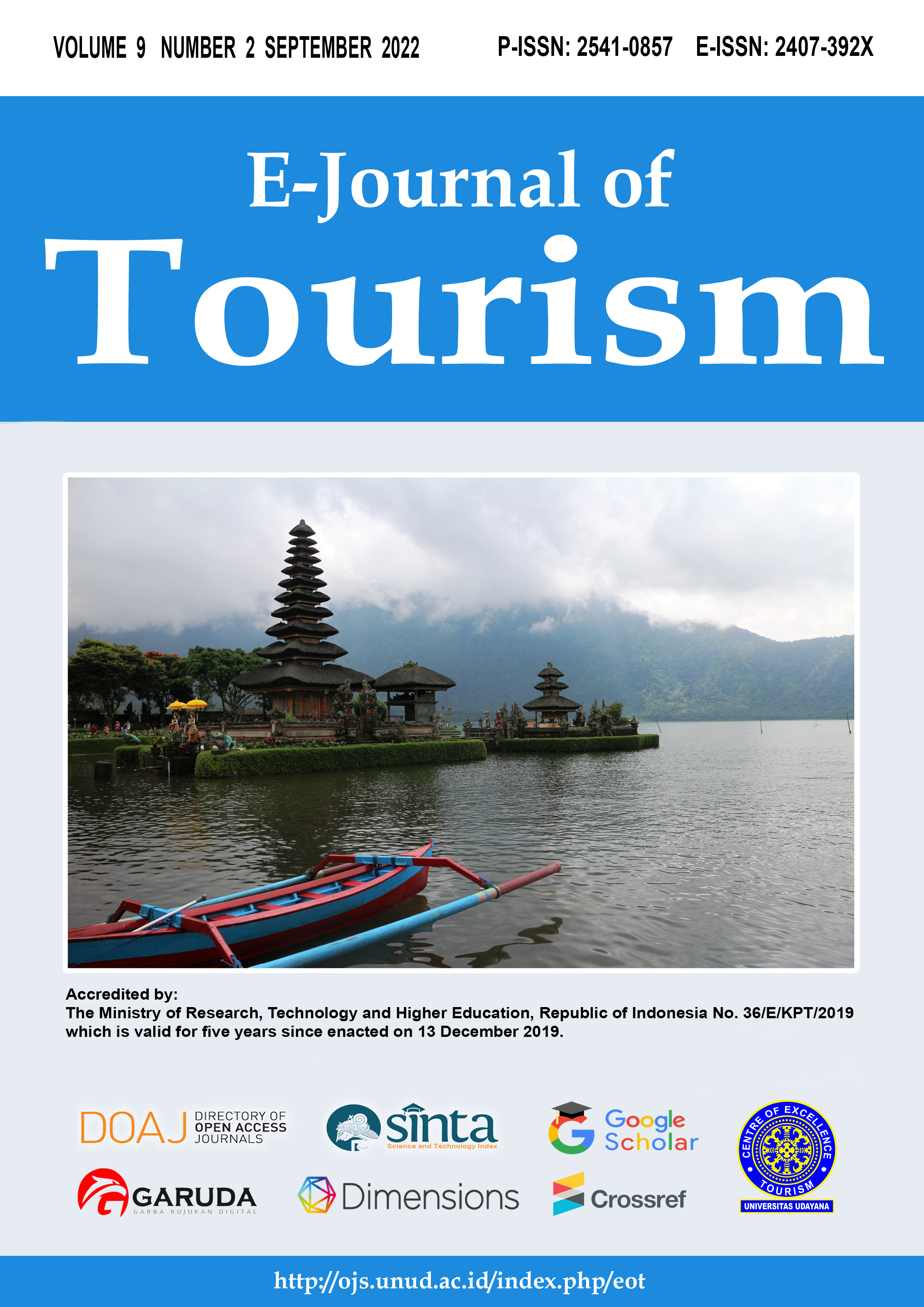Implementation of Conservation Tourism in Supporting The Protection of The Essential Turtle Ecosystem Area at Taman Kili - Kili Beach Wonocoyo, Panggul
Abstract
Conservation tourism was developed as an alternative to large-scale tourism activities that operate in nature without paying attention to ecological sustainability through natural resources. Conservation management in tourism is a form of concern for the damage to the life of natural resource ecosystems, both caused by human activities and global climate change. Analyzing the relevance of establishing the Taman Kili - Kili Coastal Turtle Ecosystem Reserve as a tourist destination, while prioritizing natural ecosystems and providing benefits for the livelihoods of the local community. The approach in this research is a descriptive qualitative method, describing the results of the study and relating each research data found. The data instrument used involved observation and in-depth interviews with the Kili - Kili beach turtle conservation local community. Conservation tourism activities at Kili – Kili Beach prioritize educating visitors regarding turtle habitats and ecosystems, besides that the purpose of conservation tourism on the Kili – Kili coast is as one of the limited uses of natural resources and natural resources owned without having to exploit turtles. Conservation tourism is carried out in accordance with the provisions in the management of conservation areas and also essential ecosystem areas, while still paying attention to the socio-cultural environment of the surrounding community so that the purpose of the function of utilizing the essential turtle ecosystem area can also be felt by the surrounding community.
Keywords: conservation tourism; turtle essential ecosystem areas.
Downloads

This work is licensed under a Creative Commons Attribution 4.0 International License.
The copyright of the received article shall be assigned to the journal as the publisher of the journal. The intended copyright includes the right to publish the article in various forms (including reprints). The journal maintains the publishing rights to the published articles.




















